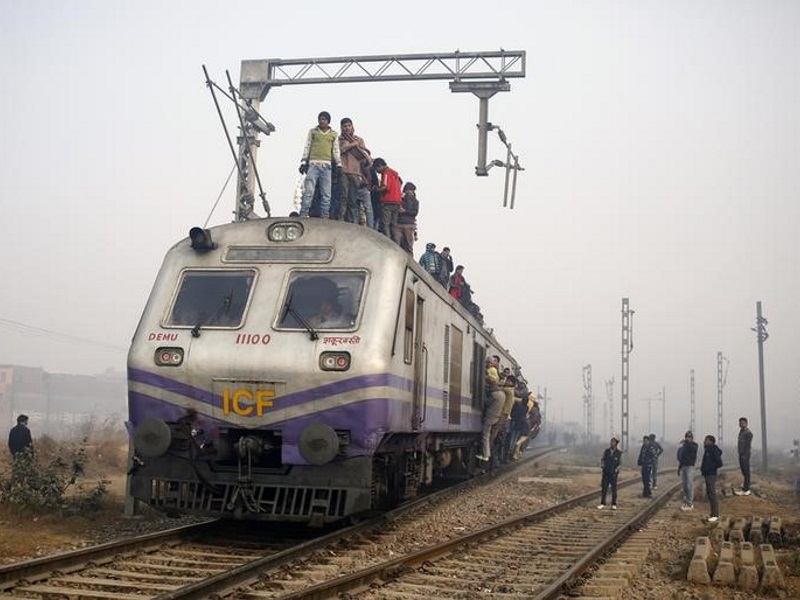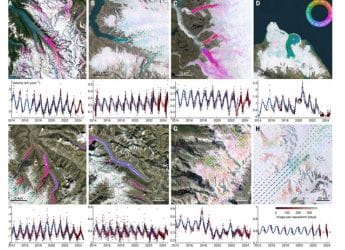- Home
- Science
- Science News
- Indian Railways to Tie Up With Isro to Improve Efficiency, Safety
Indian Railways to Tie-Up With Isro to Improve Efficiency, Safety

"We will undertake a massive exercise of GIS mapping of the entire rail route and assets including buildings, land, workshops and other facilities in the network using geo-spatial technology," said a senior Railway Ministry official involved with GIS mapping project.
Geo-spatial technology involves GPS (global positioning systems), GIS (geographical information systems), and RS (remote sensing).
The official said geo-spatial services will be available from satellite-assisted navigational support through the GPS aided geo augmented navigation (GAGAN) system of Isro.
"We will sign an MoU with Isro shortly to avail the online satellite images to create a GIS platform," said the official.
The MoU will facilitate getting images and communications through the satellite system. While the images will help in mapping the area, communications will enable the introduction of Wi-Fi service in trains in a larger way.
The technology will come in handy at the time of accidents when it can be used to ascertain the exact location of trains and the topography.
Besides, it will also help railways in developing solutions for safety at unmanned level crossings with remote sensing facility.
Safety at unmanned level crossings is a cause of serious concern for railways and the public transporter is exploring various ways to address the issue.
Remote sensing system can be used to warn road users by activating the hooters before the arrival of trains at unmanned level crossings, he said.
The satellite images will also be used for geo-fencing of stations for paperless ticketing system.
Geo-fencing is a virtual barrier which uses the global positioning system (GPS) or radio frequency identification (RFID) to define geographical boundaries.
Railways have started the paperless tickets in unreserved segment for suburban services in Delhi, Mumbai and Chennai.
As per the plan, railways have decided to go paperless with regard to monthly season tickets and platform tickets.
Geo-fencing of stations is a must for going paperless and the tie-up with Isro will enable railways in getting the required back-up from satellite, he said.
The technology is also expected to be used for tracking trains for disseminating information about their movement on real time basis which will be a great help to passengers.
Currently train movements are tracked manually.
Get your daily dose of tech news, reviews, and insights, in under 80 characters on Gadgets 360 Turbo. Connect with fellow tech lovers on our Forum. Follow us on X, Facebook, WhatsApp, Threads and Google News for instant updates. Catch all the action on our YouTube channel.
Related Stories
- Samsung Galaxy Unpacked 2025
- ChatGPT
- Redmi Note 14 Pro+
- iPhone 16
- Apple Vision Pro
- Oneplus 12
- OnePlus Nord CE 3 Lite 5G
- iPhone 13
- Xiaomi 14 Pro
- Oppo Find N3
- Tecno Spark Go (2023)
- Realme V30
- Best Phones Under 25000
- Samsung Galaxy S24 Series
- Cryptocurrency
- iQoo 12
- Samsung Galaxy S24 Ultra
- Giottus
- Samsung Galaxy Z Flip 5
- Apple 'Scary Fast'
- Housefull 5
- GoPro Hero 12 Black Review
- Invincible Season 2
- JioGlass
- HD Ready TV
- Laptop Under 50000
- Smartwatch Under 10000
- Latest Mobile Phones
- Compare Phones
- Realme P4x 5G
- OnePlus Ace 6T
- Nubia Flip 3
- Nubia Fold
- OPPO A6x 5G
- Samsung Galaxy Z TriFold
- Poco F8 Ultra
- Poco F8 Pro
- Asus ProArt P16
- MacBook Pro 14-inch (M5, 2025)
- Poco Pad M1
- Poco Pad X1
- Just Corseca Skywatch Pro
- Honor Watch X5
- Acerpure Nitro Z Series 100-inch QLED TV
- Samsung 43 Inch LED Ultra HD (4K) Smart TV (UA43UE81AFULXL)
- Asus ROG Ally
- Nintendo Switch Lite
- Haier 1.6 Ton 5 Star Inverter Split AC (HSU19G-MZAID5BN-INV)
- Haier 1.6 Ton 5 Star Inverter Split AC (HSU19G-MZAIM5BN-INV)

















